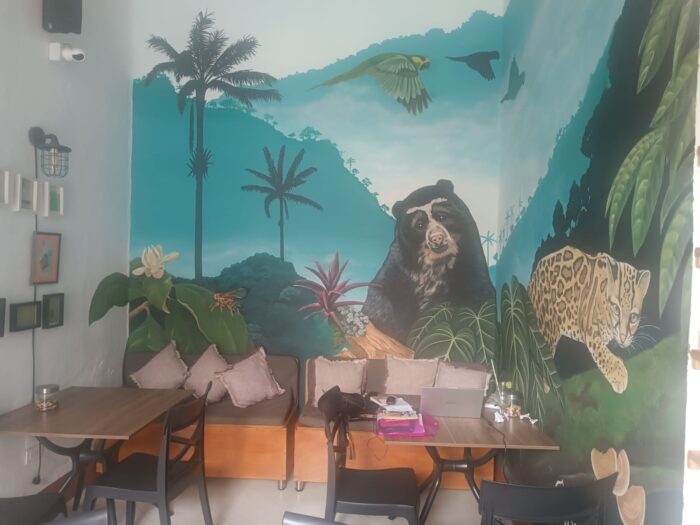Creating the right environment for your child to learn a language is necessary especially if they are bilingual. In the third part in this series we will look at what exactly is the right environment while in the previous articles we talked about the language acquisition process in children and the role of parents in it.
What is a learning environment?
Learning environment includes everything from the set of tools used to the people that influence and contribute to the learning of the language, and the dynamics in between. For simplicity, we will discuss the informal environment surrounding the child, which is the home and the social circle.

# 1. Offer a wide range of possibilities
Let’s say what works for you is to go to a class or take a course that explains grammar rules. Another person may prefer to pick up a language by delving into real life and learning the language by practicing it. Whatever it may be, preference is the product of experience.
In the case of children, it becomes necessary to accompany them to discover what works better for them. Ideally, offer them a wide range of possibilities. Update them regularly and make it flexible for them to adopt.
For instance, with books and literature choose those appropriate to the age of your child and related to his or her favorite subject. Make them available in the native languages of the child. It is not necessary to buy hundreds of publications, second-hand magazines will do. Libraries, too afford a diverse range of resources.
Exposure to multimedia…
helps children see the language in full use. Getting your child to watch videos and films for short periods should not be seen as promoting screen time. You can have the same movie in different languages and have a weekly movie-night where you alternate between languages. Ideally, the language should be dubbed because listening is developed earlier than reading. Also, children under 12 years of age hardly enjoy reading subtitles.
The example of parents speaking in the native language…
is the best way for a child to learn how to use each word, correctly. It is a misconception that if we speak our foreign mother tongue at home, we will be depriving them of learning the language of their adoptive country. Openness and appreciation for each language allows children to gain confidence, recognize that all languages have value and that it will come of use some time in their lives.
Plan didactic activities…
like play groups, music classes, theater or play-dates in both languages. If there is no available playgroup in your native language, start one in your community. The world is globalized today that ultimately you will always find people who speak your language.
# 2. Cultural activities in the learning languages
During the current pandemic, it may be difficult to take children to a concert, theater or puppet show. However, it is necessary to indulge in artistic, cultural and creative activities in the languages the child is learning. Art is linguistically rich and appeals to a child’s aesthetic sense. For instance, if reading a book about Snow White can be boring, watching a puppet show about the same character can be fun.
In addition, art awakens empathy and the emotions of joy or curiosity in a child which helps retain languages. Consequently, looking for alternatives and making time for these activities is a necessary part of the ideal environment you want to create.
# 3. Age matters and the younger the better
Neurological studies show that the acquisition of lexicon (vocabulary) and learning of phonemes (sounds) differ according to age (see article). While the lexicon continues to be acquired until the end of life, phonetic ability to imitate sounds is forged in the first 4 months after birth, and decreases over the years.
To that must be added the emotional connection with the language. Passively listening to radio or watching television is not enough. It is the interaction and emotional use of language that really constitutes learning.

# 4. Family and social gatherings
It is necessary to promote family and social encounters to encourage language learning as well. The current ‘virtuality’ compounded by the global pandemic of the moment, allows us to explore more, video-calls with grandparents and relatives. Distance is no longer an obstacle to communication.
Children upto 3 years have a shorter attention span so the habit need to be cultivated from that age onwards. They don’t have to be big events either. Having a visitor who speaks the minority language already creates the learning environment.
Interactions with adults other than the parents, in the desired languages that the child is learning promotes use of the language and diversifies vocabulary. Children, also gain more security when they feel heard and understood by others.
# 5. Respecting preferences
As they grow, children develop clearer linguistic affinities. They may lose words to express themselves in the minority language (which is only spoken at home and not in the social context), as they acquire more vocabulary and expressions of the majority language (social context language).
As schooling starts, exposure to one particular language is prolonged. Making it “mandatory” to speak or listen to a certain language can be counterproductive and make the child reject the process because normally we do not like anything that is imposed on us. More on this, evolution with age in the next post.
Meanwhile continue discovering with us the fascinating world of bilingual development in children and feel free to share your comments and questions.
By Luisa Trujillo @lutmadev



